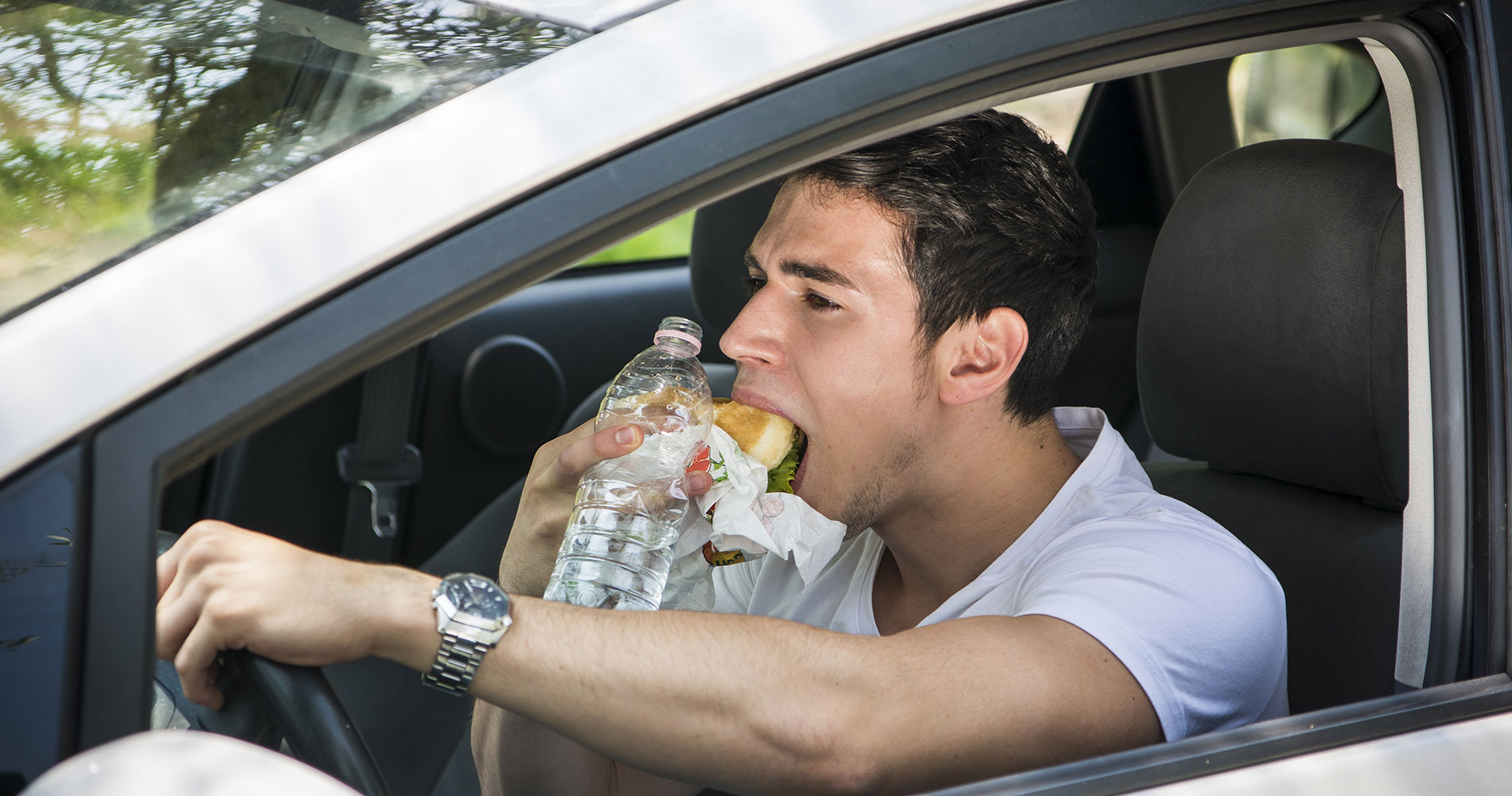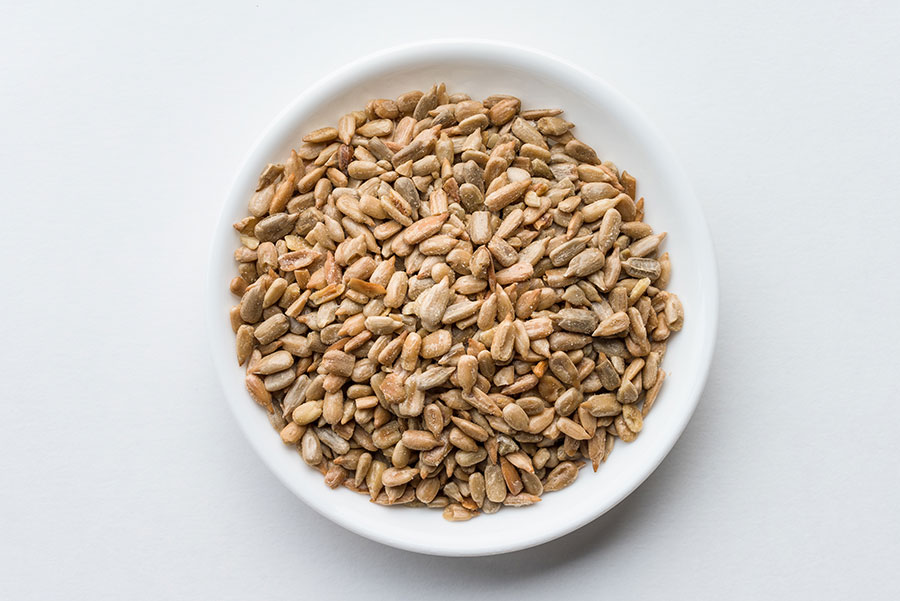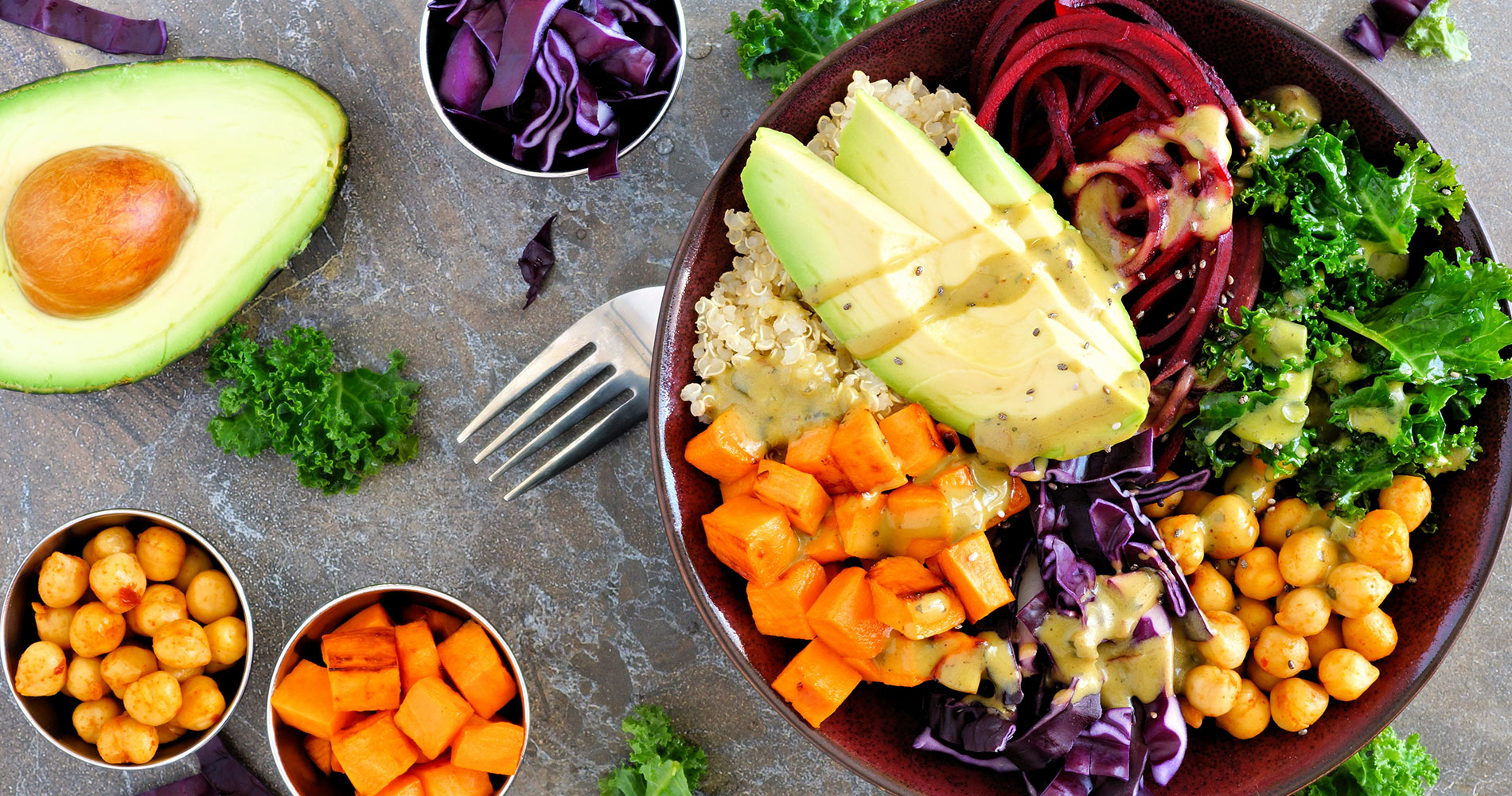Nutritious Green Foods You Didn’t Know About
Good nutrition is all about variety! Browse through our list of unusual fruits and veggies and give yourself a chance to try something new.


I’m starting on my weight loss journey and a huge obstacle for me is eating healthy. I’m a mailman so I spend 8-10 hours working outdoors with no access to a microwave and only fast food restaurants near me. Do you have any advice needed on how to eat and maintain a healthy diet?
– Cesar P.

The best solution I can see for you, Cesar, is to bring healthy lunches with you during your shift. Since some carrier units even deliver groceries, I’ll assume you are allowed an insulated lunch bag or cooler in your vehicle. Information from the National Association of Letter Carriers indicates a lunch break for mealtime is 30 minutes – plenty of time to enjoy a healthy meal. Whatever your route’s authorized lunch locations may be, a meal from home works.
Without a microwave, you can still enjoy a hot healthy lunch. Today’s Thermos® food jars can keep food hot over 5 hours; longer with the larger sizes. For best results, pre-heat your vacuum insulated stainless steel container with hot water for several minutes while cooking your food. Stews, pasta dishes, casseroles, rice meals, even stir-fry all keep well, but this technique is not suggested for items you want to stay dry and flaky. An insulated lunch bag or tote with a few ice blocks can keep several items cool at once. Consider packing a turkey sandwich on whole wheat bread, fruit, and carrot/celery sticks for a balanced meal. More grown-up fare like a tuna pasta salad with cherry tomatoes works, too.
For the days when you don’t bring along your own food, dig into the menus at the fast-food establishments near you. Many offer some type of chicken breast meal/sandwich and a side salad option. Omitting cheese, swapping out the fries for a vegetable or fruit, and are all possibilities to improve a traditional drive-thru meal. Iced tea or water are preferable over soda. A small juice works occasionally, such as with an egg breakfast sandwich.
– Debbie J., MS, RD
This article should not replace any exercise program or restrictions, any dietary supplements or restrictions, or any other medical recommendations from your primary care physician. Before starting any exercise program or diet, make sure it is approved by your doctor.
Some questions have been edited for length and/or clarity.
 Have a nutrition question? Our registered dietitian is ready to help!
Have a nutrition question? Our registered dietitian is ready to help!
Email nutrition@lafitness.com or submit your question below and it may be featured in an upcoming article!
Good nutrition is all about variety! Browse through our list of unusual fruits and veggies and give yourself a chance to try something new.
Does liberally salting your food help you pump more iron in the gym? Registered Dietitian, Debbie James, investigates the claims!
One frequently asked question is about the recommended intake of protein. We hear you! Here is everything you need to know.


I’m a 49-year-old male, 5’ 11” in height and 188 lbs. My body fat was measured at 30%. I do strength training 3 to 4 times a week. My goal is to reduce my weight (maybe another 10 lbs.), reduce my body fat percentage, and increase my muscle mass. How many calories should I be eating a day and how much protein should I be consuming?
– Morrie B.

A rough estimate of your energy and protein needs, given the anthropometrics and goals you provided, are 2,200-2,600 calories and 135-162 grams of protein daily. These are derived from the most common equations for predicting energy needs and setting protein at 25% calories.
Your actual energy requirement could vary greatly since genetics, metabolism and individual biochemistry dictate how many calories you truly use. Your body has adapted to the way you eat over the last few decades so it’s possible you maintain weight currently at 2,000 calories or 3,000 calories. Thus, moving toward 2,500 could possibly be an unintended reduction or an increase.
It’s best to determine how much you are currently consuming by tracking intake over several days and using a diet analysis program to calculate the calories and grams of protein for you. Then you can evaluate if you need to increase/decrease either component. Know that you can only effectively use a maximum of 2 grams protein per kilogram body weight (your 85.5 kg means 170 grams of protein) daily.
– Debbie J., MS, RD
This article should not replace any exercise program or restrictions, any dietary supplements or restrictions, or any other medical recommendations from your primary care physician. Before starting any exercise program or diet, make sure it is approved by your doctor.
Some questions have been edited for length and/or clarity.
 Have a nutrition question? Our registered dietitian is ready to help!
Have a nutrition question? Our registered dietitian is ready to help!
Email nutrition@lafitness.com or submit your question below and it may be featured in an upcoming article!
Good nutrition is all about variety! Browse through our list of unusual fruits and veggies and give yourself a chance to try something new.
Does liberally salting your food help you pump more iron in the gym? Registered Dietitian, Debbie James, investigates the claims!
One frequently asked question is about the recommended intake of protein. We hear you! Here is everything you need to know.

“And the award goes to… Chef Valerie, who so artfully displays her vegetarian stacked risotto dish with walnut topping,” announces the culinary instructor for the week’s competition. Valerie loves food – cooking with it, eating it, and playing with it. Even without formal training, we can all be winners when it comes to the game of eating.
If you read the title of this article, you might have thought about making food art on your plate or a cafeteria “Food Fight!” Perhaps, you imagined a picky kid pushing food around to hide his peas under the mashed potatoes. We don’t mean just arranging your food into pictures, but playing with your food is about spending time to manipulate and use your ingredients in unconventional ways. Okay, and having fun eating it, too!
See our previous article, 10 Surprising Food Combinations You’ll Love
Playing with your food could mean experimenting with unusual combinations, using an alternate preparation method, trying a foreign dish, or following a new recipe. You might put sandwich fixings on flatbread, or salad in a jar. The trend of bowl meals (usually grains, vegetables, greens, and protein) is a great example of adopting a foreign dish like Korean bibimbap and tailoring it to American fare. Maybe have an “opposite day” where dinner and breakfast are swapped. Hurray for French toast in the evening!

Why create and have fun? Playing with your food may have a secret side effect – lower weight! Eating quickly is associated with overweight status1, more so than are late evening meals or skipping breakfast. A body mass index (BMI) 25 kg/m2 or greater is considered overweight. Those that eat at a slower pace tend to be a lower weight, to the tune of an average 4 lower BMI2. Keep in mind that the healthy BMI range is 18.5–24.9 kg/m2, so a difference of 4 represents a lot! A slower pace of eating lets the satiety hormone leptin kick in so that you feel full sooner and eat less.

Therefore, slowing your pace of eating is an integral part of weight control. Lining up green beans, turning all your shrimp the same direction or arranging your potato wedges by size may have been stalling techniques when you were a kid. Now, they are valid ways to lengthen eating duration and eating slower! Two food games for adults and children alike are: 1) put a bit of each type of food on the fork for every bite, and 2) leave a symmetrical plate of food after each bite.

If poking around your food seems juvenile, take an epicurean approach to slow down: Once served, spend a moment to appreciate your meal. Inhale the aroma. Notice the colors and details before you savor each bite like it’s the last on the planet. Use a fork and knife (or chopsticks) for finger foods. This especially works well for pizza, burgers and comfort foods!
No matter how you play, keep meals healthy and balanced (and we don’t mean juggling).
References:
Good nutrition is all about variety! Browse through our list of unusual fruits and veggies and give yourself a chance to try something new.
Does liberally salting your food help you pump more iron in the gym? Registered Dietitian, Debbie James, investigates the claims!
One frequently asked question is about the recommended intake of protein. We hear you! Here is everything you need to know.


I am in outside sales, always on the road for lunch and occasionally dinner and morning breakfast as well. Packing a lunch is a great idea but it gets hot in TX so the idea of a cooler and cold food is not always appealing. Most areas have a grocery store but not all have healthy prepared meals. I am looking for ideas for quick eats on the road. Please offer advice given the idea I won’t know what restaurants will be in the area. I have found myself in the habit of stopping at the grocery and getting a fruit, 2 small yogurts and some bulk granola to mix. While I enjoy this, it gets old. Any advice would be appreciated.
– Tommy S.

It sounds like you are at the mercy of what’s available wherever you find yourself at lunchtime. You’re right that some groceries do not offer a variety of ready-to-eat fresh meals or prepared produce in individual quantities. Your yogurt-fruit-granola solution works in a pinch. Here are some other ideas for a decent lunch:
A salad mix with dressing plus the smallest container of pre-cooked protein (e.g. 6 oz chicken breast strips, 2-pack hard cooked eggs) or with a mini pull-top can of beans or tuna could work. You don’t even need a bowl – just eat out of the bag!
Nuts or sunflower seeds are something that can serve as both a standalone snack or as a topping for your yogurt or on a salad mix. Look for them in a resealable container.
Individual tubs of hummus with pretzel thins work well in combination with a pack of sliced raw vegetables if you can find them.
Hot soup from the end of a self-serve bar, if there is one. For broth soups, add a soft pretzel from the bakery or hearty crackers (keep the rest of the box for later) and an individual wrapped snack cheese from the cold case. For stews, chili or heavy cream soups can be paired with some raw vegetables or an apple.
Embrace the cold. Visit the deli case for pre-made cold salads, coleslaw, and perhaps even find roasted chicken drumsticks. You don’t have to reheat.
For a to-go order at whatever restaurant you come across, ask if they can turn a sandwich into a wrap, adding a vegetable and holding the cheese or mayo.
– Debbie J., MS, RD






This article should not replace any exercise program or restrictions, any dietary supplements or restrictions, or any other medical recommendations from your primary care physician. Before starting any exercise program or diet, make sure it is approved by your doctor.
Some questions have been edited for length and/or clarity.
 Have a nutrition question? Our registered dietitian is ready to help!
Have a nutrition question? Our registered dietitian is ready to help!
Email nutrition@lafitness.com or submit your question below and it may be featured in an upcoming article!
Good nutrition is all about variety! Browse through our list of unusual fruits and veggies and give yourself a chance to try something new.
Does liberally salting your food help you pump more iron in the gym? Registered Dietitian, Debbie James, investigates the claims!
One frequently asked question is about the recommended intake of protein. We hear you! Here is everything you need to know.


About 7 months ago, I weighed about 200 pounds with little to muscle at all. I decided to start working out heavily and I completely revamped my diet, cutting out most fats and carbs, and keeping my protein intake very high. It is important to mention that I am a vegetarian, so most of my protein comes from dairy products such as Greek yogurt and eggs. I kept my calorie count below 1,700 and saw some immediate effects for about 3 months. After the 3 months, I decided I wanted to put on some muscle as well as lose body fat. I started to eat a bit more increasing my daily protein intake to 180 grams, and eating about 2,000 calories. I also gained a good bit of muscle in the beginning but after 4 months, I am in a stalemate. My body fat percentage won’t seem to decrease, and I am gaining muscle at a very slow rate. However, I am increasing my strength as I consistently add more weights to my workouts. Should I try a new diet plan, or just stick with my current one and eventually get over my plateau?
– Krishna

As you have discovered, plateaus are tricky, Krishna. Perhaps your current diet has run its course, as your stalemate has lasted 4 months. You describe your recent intake as about 2000 calories with 180 grams protein, mostly from dairy. The missing details may offer opportunity for improvement.
If your main goal is strength and muscle development, stay the course. But if you primarily want to lose weight, consider focusing on some details other than protein & calorie quantity.
– Debbie J., MS, RD
This article should not replace any exercise program or restrictions, any dietary supplements or restrictions, or any other medical recommendations from your primary care physician. Before starting any exercise program or diet, make sure it is approved by your doctor.
Some questions have been edited for length and/or clarity.
 Have a nutrition question? Our registered dietitian is ready to help!
Have a nutrition question? Our registered dietitian is ready to help!
Email nutrition@lafitness.com or submit your question below and it may be featured in an upcoming article!
Good nutrition is all about variety! Browse through our list of unusual fruits and veggies and give yourself a chance to try something new.
Does liberally salting your food help you pump more iron in the gym? Registered Dietitian, Debbie James, investigates the claims!
One frequently asked question is about the recommended intake of protein. We hear you! Here is everything you need to know.
Be the first to know about exclusive
content, deals and promotions